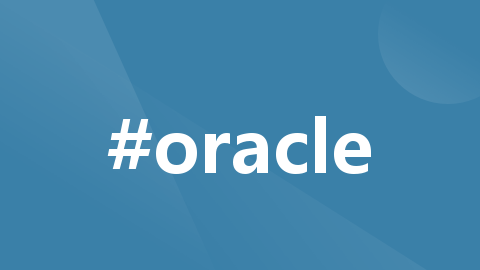Echarts自定义图形,方法参考
echart自定义图形,制作一个三个面组成的,伪3D柱形图
在一个前端大屏项目中,有一个模块使用到了自定义的,由三个面组成的伪3D柱形图。在此处记录一下,方便后续自定义的时候参考一下。涉及到了zrender里面的一些方法,还特意去zrender看了些示例和文档。
1.自定义图形最后的效果是这样的:

图形由三个面组成,需要定义三个形状。用cubeleft,cubetop,cuberight来分别定义左侧面,顶部面以及右侧面。
2.注册自定义的图形
echarts官方文档处:Documentation - Apache ECharts

我们需要定义一个这样的类,然后再通过echarts来注册这个类,后续就可以通过类名来使用了。
3.extendShape
// 绘制左侧面
const CubeLeft = echarts.graphic.extendShape({
shape: {
x: 0,
y: 0
},
buildPath: function(ctx, shape) {
const xAxisPoint = shape.xAxisPoint
const c0 = [shape.x, shape.y]
const c1 = [shape.x - 13, shape.y - 13]
const c2 = [xAxisPoint[0] - 13, xAxisPoint[1] - 13]
const c3 = [xAxisPoint[0], xAxisPoint[1]]
ctx.moveTo(c0[0], c0[1]).lineTo(c1[0], c1[1]).lineTo(c2[0], c2[1]).lineTo(c3[0], c3[1]).closePath()
}
})
// 绘制右侧面
const CubeRight = echarts.graphic.extendShape({
shape: {
x: 0,
y: 0
},
buildPath: function(ctx, shape) {
const xAxisPoint = shape.xAxisPoint
const c1 = [shape.x, shape.y]
const c2 = [xAxisPoint[0], xAxisPoint[1]]
const c3 = [xAxisPoint[0] + 18, xAxisPoint[1] - 9]
const c4 = [shape.x + 18, shape.y - 9]
ctx.moveTo(c1[0], c1[1]).lineTo(c2[0], c2[1]).lineTo(c3[0], c3[1]).lineTo(c4[0], c4[1]).closePath()
}
})
// 绘制顶面
const CubeTop = echarts.graphic.extendShape({
shape: {
x: 0,
y: 0
},
buildPath: function(ctx, shape) {
const c1 = [shape.x, shape.y]
const c2 = [shape.x + 18, shape.y - 9]
const c3 = [shape.x + 5, shape.y - 22]
const c4 = [shape.x - 13, shape.y - 13]
ctx.moveTo(c1[0], c1[1]).lineTo(c2[0], c2[1]).lineTo(c3[0], c3[1]).lineTo(c4[0], c4[1]).closePath()
}
})这段代码主要是看buildpath如何使用,zrender的官方文档中,并没有直接告诉这个方法的两个参数是干什么用的,只给了一个示例,从这个示例中,可以知道这两个参数具体怎么用。

第一个参数是path,第二参数是shape。path可以理解为一个canvas中的绘制画笔,可以设置路径并且闭合路径。
第二个参数在echarts中,是自定义的custom传递过来的,因此可以通过这个对象获取到我们一个很熟悉的属性 xAxisPoint。
绘制的两个面中,只有左侧和右侧面需要有填充高度,顶部不需要,所以顶部的形状就没有使用xAxisPoint这个属性。
这也是很好理解的,因为我们自定义的伪圆柱体里面的填充物肯定是有一个高度的。填充多少根据我们的数据来知道,让它看起来确实是被某种东西从底部开始增多填充了。
拿比较简单的顶部来举例:
buildPath: function(ctx, shape) {
const c1 = [shape.x, shape.y]
const c2 = [shape.x + 18, shape.y - 9]
const c3 = [shape.x + 5, shape.y - 22]
const c4 = [shape.x - 13, shape.y - 13]
ctx.moveTo(c1[0], c1[1]).lineTo(c2[0], c2[1]).lineTo(c3[0], c3[1]).lineTo(c4[0],c4[1]).closePath()
}绘制的四边形,其实就是四个顶点,我们只需要用moveTo来控制路径就行,在最后那个点进行闭合就行。偏移量是固定的值,可以根据情况自己去设置不同的值来扭曲这个四边形。
其中c1是底部的顶点,c2是右侧的顶点,c3是顶部的顶点,c4是右侧的顶点。其他两个面也是类似的。
4.使用echarts注册这三个图形
// 注册三个面图形
echarts.graphic.registerShape('CubeLeft', CubeLeft)
echarts.graphic.registerShape('CubeRight', CubeRight)
echarts.graphic.registerShape('CubeTop', CubeTop)5.使用自定义的形状
其他的数据都和正常使用echarts一样,不同的地方在于series的配置。
series数组中,总共放置二个对象。第一个对象如下:
{
type: 'custom',
renderItem: function(params, api) {
const location = api.coord([api.value(0), api.value(1)])
return {
type: 'group',
children: [{
type: 'CubeLeft',
shape: {
api,
x: location[0],
y: location[1],
xAxisPoint: api.coord([api.value(0), 0])
},
style: {
fill: 'rgba(47,102,192,.27)',
stroke: 'black'
},
z2: 999
}, {
type: 'CubeRight',
shape: {
api,
x: location[0],
y: location[1],
xAxisPoint: api.coord([api.value(0), 0])
},
style: {
fill: 'rgba(59,128,226,.27)',
stroke: 'black'
},
z2: 999
}, {
type: 'CubeTop',
shape: {
api,
x: location[0],
y: location[1],
xAxisPoint: api.coord([api.value(0), 0])
},
style: {
fill: 'rgba(72,156,221,.27)',
stroke: 'black'
},
z2: 999
}]
}
},
data: MAX
}最主要的还是renderItem里面的逻辑,这个方法返回一个对象,对象就是我们自定义的一个group组。renderItem可以返回的对象在文档中都有说明:Documentation - Apache ECharts
我们定义的那三个面,需要把它看成一个整体,所以renderItem返回的是一个类型为group的对象,另外三个形状作为children保存在数组中。
其中的shape参数,会在buildpath中使用到。
style中设置了它的填充颜色和边框线颜色。然后使用z2定义这个echarts的显示层级为最上级。如果不使用它,下面用于填充的会将其遮挡住。
这里也只是定义了第一个自定义的形状,也就是最外层的那个伪3d柱体。第二个自定义形状是要填充的形状。
{
type: 'custom',
renderItem: (params, api) => {
const location = api.coord([api.value(0), api.value(1)])
var color = new echarts.graphic.LinearGradient(
0, 0, 0, 1, [{
offset: 1,
color: "#FEFD53"
},
{
offset: 0,
color: "#f7c824"
}
]
);
return {
type: 'group',
children: [{
type: 'CubeLeft',
shape: {
api,
xValue: api.value(0),
yValue: api.value(1),
x: location[0],
y: location[1],
xAxisPoint: api.coord([api.value(0), 0])
},
style: {
fill: color,
stroke: 'red'
}
}, {
type: 'CubeRight',
shape: {
api,
xValue: api.value(0),
yValue: api.value(1),
x: location[0],
y: location[1],
xAxisPoint: api.coord([api.value(0), 0])
},
style: {
fill: color,
stroke: 'red'
}
}, {
type: 'CubeTop',
shape: {
api,
xValue: api.value(0),
yValue: api.value(1),
x: location[0],
y: location[1],
xAxisPoint: api.coord([api.value(0), 0])
},
style: {
fill: color,
stroke: 'red'
}
}]
}
},
data: VALUE
}内部填充的图形,使用了一个线性渐变的颜色用来填充。边框线使用红色。与第一个不同的是,style里面的风格,以及data使用的数据。这里的data使用value具体的数值。而外壳的图形使用的数据是max最大值。这样就会有一个渐变颜色填充的红色边框图形,填充到了一个黑色边框的柱体中。
这样就自定义好了一个视觉上的3d柱体形状的图表了。
更多推荐
 已为社区贡献6条内容
已为社区贡献6条内容

 https://github.com/ecomfe/zrender/blob/master/test/pin.html
https://github.com/ecomfe/zrender/blob/master/test/pin.html







所有评论(0)